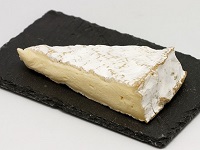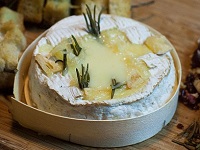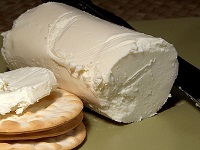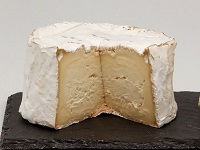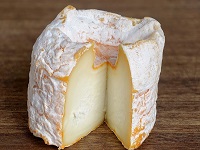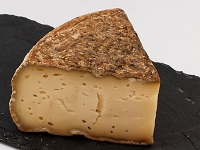Bairrada DOC (Portugal)
Portuguese Bairrata DOC is produced the same way as French Champagne.
In Portugal the method is called Método Tradicional.
Bairrada Flavors
Typical Bairrada flavors are Lemon, Lime, Apple, Almond, and Minerality.
Lemon |
Lime |
Apple |
Pear |
Flowers |
Honey |
Almonds |
Minerals |
Bairrada Profile
Bairrada is more Fruity than French Champagne, but not as Sweet as Italian Prosecco:
| SUGAR: | Dry (3 g/l) |
| BODY: | Light |
| FRUIT: | Medium |
| ACIDITY: | High |
| ALCOHOL: | 10.5-12.5% ABV |
| Serving temperature: 8-10°C (46-50°F) | |
Bairrada Food Pairing
You can drink sparkling wine to almost everything, whether it is Champagne, Cava, or Italian Prosecco.
Bairrada pairs very well with salty food, because the bubbles break up the salt in the mouth. The acidity and bubbles also pair well with rich food, creamy and oily dishes.
Aperitif |
Salads |
Vinaigrette |
Tapas |
Seafood |
Oysters |
Salmon |
Sushi |
Fish |
Chicken |
Pork |
Fries |
Risotto |
Sandwitch |
Egg |
Asparagus |
Excellent Pairings
Eggs. Srambled. Frittata.
Tapas. Nuts. Olives.
Fried Fish. Fried Chicken.
Sushi. Smoked Salmon.
Ham. Serrano. Prosciutto.
Rice. Risotto. Pasta.
Chips. French Fries.
Vinaigrette. Green Salad.
Artichoke. Asparagus.
Spanish Specialities
Gambas al Ajillo (Prawns in Chili and Garlic).
Fish Pie. Pan con Tomate.
Tortilla. Valencian Paella.
Zarzuela (Seafood Stew).
Jamón Ibérico.
The Ideal Glass for Bairrada
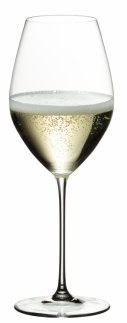
|
A Champagne Glass with a bell that points to the bottom, allows a pilar of bubbles to build up inside the glass. This is not only beautiful, but also extends the "life" of the champagne. A wide middle section lifts the aromas out of the wine. A smaller opening concentrates the scent to the nose and directs the drink to the front of the tongue where it heightens an experience of sweetness. |
Bairrada Cheese Pairing
Brie and Camembert
The creamy, buttery texture and mild flavors of Brie or Camembert pair well with Bairrada's soft bubbles and fruity notes. Serve the cheese at room temperature with slices of pear or apple.
Chèvre (Goat Cheese)
The tangy, fresh flavors of goat cheese complement the acidity often found in Bairrada, especially those made from Chenin Blanc or Sauvignon Blanc. Drizzle with a bit of honey or sprinkle with fresh herbs.
Chaource
This creamy, slightly tangy cheese enhances Bairrada's gentle acidity and complements its soft bubbles. Serve with fresh berries or a touch of apricot jam.
Langres
This mild, washed-rind cheese has a creamy texture and a subtle tang that pairs beautifully with Bairrada. Add a small drop of honey or serve with fresh grapes.Tomme de Savoie
This semi-hard, nutty cheese pairs beautifully with the gentle effervescence and often fruity character of Bairrada. Add some dried fruits or nuts to highlight the pairing.
Portuguese Sparkling
In Portugal, Sparkling wine is called Espumante. It has 3 quality levels:
VEQPRD
(Vinho Espumante de Qualidade Produzido em Região Determinada).
Método Tradicional wines, marked with the year of harvest, and stamped as VEQPRD. These wines are only produced in Bairrada DOC, south of Vinho Verde.
VFQPRD
(Vinho Frisante de Qualidade Produzido em Região Determinada).
Regional sparkling wines made with the Traditional, Charmat, or Transfer Method, in Douro, Ribatejo, Minho, Alentejo or Estremadura.
VQPRD
(Vinho de Qualidade Produzido em Região Determinada).
Sparkling wines made by the Traditional, Charmat, or Transfer method, anywhere in Portugal.
Espumoso
Espomoso is a low level sparkling wine, made by adding Carbon Dioxide - CO2.
Méthode Champenoise
Méthode Champenoise is the method used to produce French Champagne.
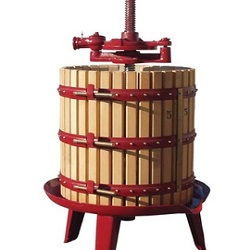 |
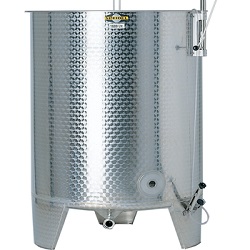 |
||
| Pressing | 1st Fermentation | Blending | 2nd Fermentation |
| Riddling | Disgorgement | Dosage | Aging |
With Méthode Champenoise, the first fermentation takes place in a tank, and a second fermentation takes place in the bottle.
The second fermentation starts by adding yeast and sugar to the bottle, and after about 1 year, the bubbles are completely developed.
The legend tells the story that a Benedictine monk (Dom Pérignon 1639-1715) invented sparkling wine when he bottled a wine too early, but the oldest recorded sparkling wine is Blanquette de Limoux (1531).
Champagne Sugar Levels
| Regulation EC 607/2009 |
Sugar gram/litre |
Calories /glass |
| Brut Nature (Brut Zero) | 0-3 | 3 |
| Extra Brut | 0-6 | 5 |
| Brut | 0-12 | 7 |
| Extra Dry (Extra Sec, Extra Seco) | 12-17 | 10 |
| Dry (Sec, Seco) | 17-32 | 20 |
| Demi (Semi) | 32-50 | 30 |
| Doux (Sweet, Dulce) | 50+ | 30+ |
